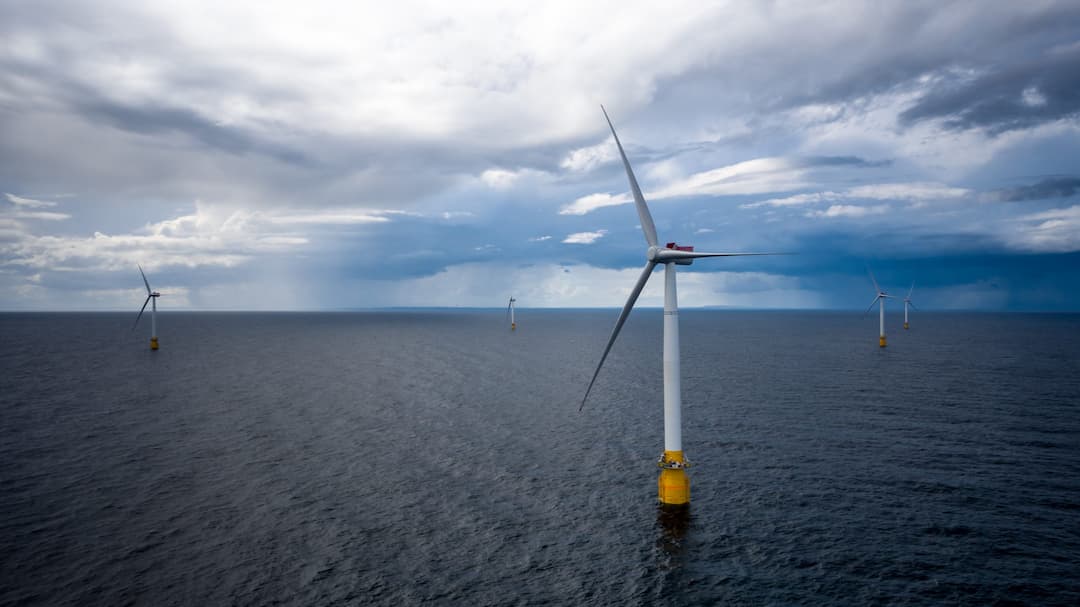Here, we look at what the outcome of the ScotWind leasing round could mean for the Scottish and UK supply chains.
Crown Estate Scotland (CES) this week announced the eagerly-awaited results of the ScotWind leasing round, with a total of 17 projects awarded. Option rights to a total seabed area of 7,343km2 have been awarded with stated deployment potential of up to 24.8GW – more than two and half times the total installed capacity of offshore wind in the UK today. The results of the leasing round are on the CES website here.
Assuming an average capacity factor of 50% (which may well be conservative for many of these sites, which are situated in some of the windiest parts of UK waters) and average UK electricity consumption of 3,731kWh per year, this would power around 29 million homes – roughly the total number of households in the whole of the UK, representing a significant opportunity in powering the UK and providing greater opportunity for energy exports. In addition, the lease option rights award process will trigger one-off option fees payable to CES of almost £700 million.
CES received a total of 74 bids in July 2021 to obtain the option rights to projects in 15 development zones. The ratio of bids to sites is a sign of the increasing competition for offshore wind real estate. This huge appetite for development rights reflects the growing interest from existing and new offshore wind players, from smaller dedicated offshore wind developers through to large utility companies, energy majors and financial investors.
The project locations represent a wide spread around the Scottish coast and with a mix of bottom-fixed and floating foundations proposed to suit individual site conditions. Almost 15GW of the total 25GW is proposed to be floating offshore wind. This represents the single largest floating offshore wind option rights award globally. It also puts Scotland and the UK on track to remain the world’s leading floating offshore wind market into the 2030s, and the UK on course to deliver almost 100GW of offshore wind by 2050.
Opportunities for the UK and Scottish supply chains
Assuming some fall off of projects during the development process, the ScotWind option agreements, coupled with the potential floating wind deployment from the INTOG leasing round and Crown Estate’s Celtic Sea leasing round, could see potentially anywhere between 8 and 12GW of UK floating offshore wind deployed by the mid-2030s, with the vast majority of this in Scottish waters.
Analysis completed by the Floating Offshore Wind Centre of Excellence in the recently issued market projections reports for Dynamic Cable Systems and Mooring and Anchoring Systems provide greater insight into the supply chain opportunities in these two areas alone. Based on 12GW of floating offshore wind deployed by the mid-2030s:
- A total of 670 sub-structures could be required.
- More than 4,000 mooring lines and anchors, representing more than 2,300km of mooring lines.
- In terms of electrical infrastructure, this could require approximately 1,300km of dynamic inter-array cables, 17 offshore sub-stations, 36 export cables with a total length of approximately 2,200km.
Delivering the required technology on this scale will require significant development in strategic supply chain and infrastructure capacity and capability. With 25GW ultimately deployed, Scottish supply chain companies stand to gain a share of development and capital expenditure in excess of £50 billion and annual operating expenditure in excess of £1 billion. Supply chain investment, appropriately timed and targeted, has the potential to see Scotland secure a significant share of the value associated with floating offshore wind projects in the UK, and in doing so, playing a key role in driving the energy transition.
Outwith the opportunities associated with floating offshore wind, significant opportunities exist associated with the bottom-fixed projects awarded lease option rights. These projects include some of the deepest bottom-fixed projects in the world, and some of the first large-scale commercial projects who are targeting “green hydrogen” production as a core part of the business model.
The energy security and supply chain opportunities are clear and the results provide a pathway to meet our Net Zero ambitions. Now begins the hard work and deep collaboration required to develop innovative solutions on consenting methodology, grid and supply chain growth to ensure we capitalise in these opportunities. This will ensure as much of this potential as possible can be fully developed, constructed and successfully operated for decades to come.
